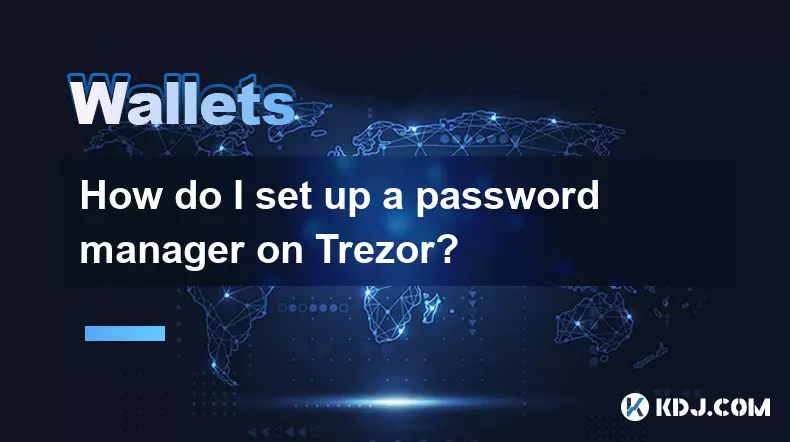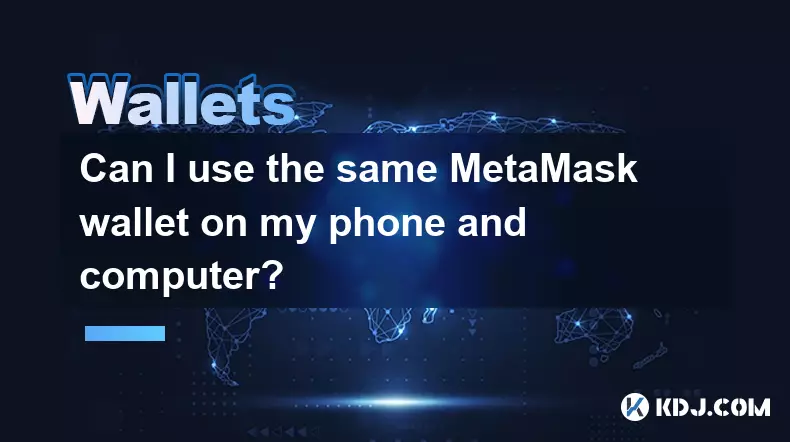-
 bitcoin
bitcoin $114779.865156 USD
2.30% -
 ethereum
ethereum $4226.519789 USD
2.39% -
 tether
tether $1.000545 USD
0.04% -
 xrp
xrp $2.890223 USD
0.92% -
 bnb
bnb $1030.029301 USD
2.95% -
 solana
solana $212.824944 USD
1.69% -
 usd-coin
usd-coin $0.999757 USD
0.01% -
 dogecoin
dogecoin $0.234961 USD
-0.27% -
 tron
tron $0.337174 USD
0.42% -
 cardano
cardano $0.804783 USD
0.09% -
 hyperliquid
hyperliquid $45.748770 USD
-2.85% -
 chainlink
chainlink $21.699170 USD
0.82% -
 ethena-usde
ethena-usde $1.001452 USD
0.08% -
 avalanche
avalanche $30.237800 USD
1.14% -
 stellar
stellar $0.372604 USD
1.52%
How do I set up a password manager on Trezor?
Trezor enhances password security by acting as a hardware key for authentication, integrating with tools like KeePassXC to protect credentials without storing passwords directly.
Sep 28, 2025 at 12:18 am

Understanding Trezor and Password Management
Trezor devices are primarily known as hardware wallets designed to securely store cryptocurrencies. They protect private keys by isolating them from internet-connected environments, reducing the risk of theft or hacking. While Trezor itself does not function as a traditional password manager like Bitwarden or 1Password, it can integrate with third-party tools to provide secure access to login credentials.
Trezor's role in password management lies in its ability to authenticate and decrypt sensitive data when used alongside compatible applications. This means users can leverage the device’s cryptographic capabilities to enhance the security of stored passwords without relying solely on software-based solutions.
Integrating Trezor with Third-Party Managers
1. Install the Trezor Suite application on your computer or access it via the official website. Ensure that your device firmware is up to date for compatibility with external services.
- Choose a password manager that supports Trezor integration, such as KeePassXC, an open-source solution known for strong encryption and customization options.
- In KeePassXC, enable the 'Two-Factor Authentication with Hardware Token' feature and select Trezor as the authentication method during database setup.
- When prompted, connect your Trezor device and confirm actions on its screen to authorize access. The device will sign challenges cryptographically, proving ownership without exposing secrets.
- Store your encrypted password database file in a secure location, knowing that decryption requires both the master password and physical presence of the Trezor.
Security Advantages of Using Trezor
1. Physical possession of the device becomes a critical component of accessing stored credentials, adding a layer of protection beyond knowledge-based factors.
- Since private keys never leave the Trezor, even if the host machine is compromised, attackers cannot extract the cryptographic material needed to unlock password databases.
- Each authentication request must be manually approved on the device’s display, preventing unauthorized access attempts through malware or phishing.
- Integration relies on standardized protocols like WebAuthn and U2F, ensuring interoperability while maintaining high-security thresholds.
- Open-source nature of both Trezor firmware and supported managers allows independent audits, increasing trust in the overall system integrity.
Practical Considerations and Limitations
1. Not all password managers support direct Trezor integration—users must verify compatibility before implementation.
- Losing the Trezor device without proper backups (such as recovery seed) may result in permanent loss of access to encrypted data.
- Some workflows may require additional steps compared to conventional managers, potentially affecting user convenience.
- Users remain responsible for creating strong master passwords; the Trezor enhances security but does not replace the need for good personal practices.
- Frequent use across multiple devices may necessitate carrying the Trezor at all times, which could pose logistical challenges.
Frequently Asked Questions
Can I use Trezor with online password managers like LastPass?Trezor does not natively integrate with commercial cloud-based password managers such as LastPass or Dashlane. However, it can serve as a FIDO2 security key for two-factor authentication, providing an added layer of account protection.
Is my password database encrypted when using Trezor with KeePassXC?Yes, KeePassXC encrypts the entire database using AES-256. The Trezor adds an additional factor by storing part of the decryption key, ensuring that both the device and the correct PIN are required to unlock the file.
What happens if I lose my Trezor device?If you have securely backed up your recovery seed, you can restore wallet functions on another device. However, for password databases tied to the hardware token, access may be lost unless alternative keys or backup methods were configured during setup.
Does Trezor store my passwords directly?No, Trezor does not store passwords. It stores cryptographic keys used to verify identity and assist in decrypting data managed by external applications. Actual credential storage remains the responsibility of the chosen password manager.
Disclaimer:info@kdj.com
The information provided is not trading advice. kdj.com does not assume any responsibility for any investments made based on the information provided in this article. Cryptocurrencies are highly volatile and it is highly recommended that you invest with caution after thorough research!
If you believe that the content used on this website infringes your copyright, please contact us immediately (info@kdj.com) and we will delete it promptly.
- The Spanish Silver Dollar: A Global Currency Through History
- 2025-09-30 14:25:15
- SEC, Crypto, and Regulation: Navigating the Shifting Sands of Digital Finance
- 2025-09-30 14:25:15
- Government Grift, Congress, and ETF Tracking: Is This the Future of Investing?
- 2025-09-30 14:30:01
- CoinShares' Market Metrics: Bitcoin's Calm Amidst Fed Rate Tweaks
- 2025-09-30 14:30:01
- Nonprofit RFI Launches: Bridging Traditional and Decentralized Financial Systems
- 2025-09-30 14:30:01
- Emilio Lozoya's audience: REAL-TEME UPDATES VIA WHASTASP?
- 2025-09-30 14:30:15
Related knowledge

Can I use the same MetaMask wallet on my phone and computer?
Sep 30,2025 at 01:37pm
Using MetaMask Across Multiple Devices1. Yes, you can use the same MetaMask wallet on both your phone and computer by restoring it with the same secre...

How to see my NFTs in my MetaMask wallet?
Sep 30,2025 at 01:19pm
Accessing Your NFTs Through MetaMask1. Open the MetaMask wallet application on your mobile device or browser extension. Ensure you are logged into the...

How to import a wallet using a private key in MetaMask?
Sep 30,2025 at 12:54pm
Understanding Private Key Wallet Import in MetaMask1. Open the MetaMask browser extension or mobile app and ensure you are logged out of any active wa...

How do I view smart contract interaction history in Coinbase Wallet?
Sep 24,2025 at 01:36am
Accessing Smart Contract Interaction History in Coinbase Wallet1. Open the Coinbase Wallet application on your mobile device and log in using your cre...

How do I use the token swap feature in Coinbase Wallet?
Sep 24,2025 at 05:00pm
Understanding Token Swaps in Coinbase Wallet1. The token swap feature in Coinbase Wallet enables users to exchange one cryptocurrency for another dire...

How do I participate in governance voting in Coinbase Wallet?
Sep 25,2025 at 01:55pm
Understanding Market Volatility in the Crypto Space1. Cryptocurrency markets are known for their extreme price fluctuations, often driven by sentiment...

Can I use the same MetaMask wallet on my phone and computer?
Sep 30,2025 at 01:37pm
Using MetaMask Across Multiple Devices1. Yes, you can use the same MetaMask wallet on both your phone and computer by restoring it with the same secre...

How to see my NFTs in my MetaMask wallet?
Sep 30,2025 at 01:19pm
Accessing Your NFTs Through MetaMask1. Open the MetaMask wallet application on your mobile device or browser extension. Ensure you are logged into the...

How to import a wallet using a private key in MetaMask?
Sep 30,2025 at 12:54pm
Understanding Private Key Wallet Import in MetaMask1. Open the MetaMask browser extension or mobile app and ensure you are logged out of any active wa...

How do I view smart contract interaction history in Coinbase Wallet?
Sep 24,2025 at 01:36am
Accessing Smart Contract Interaction History in Coinbase Wallet1. Open the Coinbase Wallet application on your mobile device and log in using your cre...

How do I use the token swap feature in Coinbase Wallet?
Sep 24,2025 at 05:00pm
Understanding Token Swaps in Coinbase Wallet1. The token swap feature in Coinbase Wallet enables users to exchange one cryptocurrency for another dire...

How do I participate in governance voting in Coinbase Wallet?
Sep 25,2025 at 01:55pm
Understanding Market Volatility in the Crypto Space1. Cryptocurrency markets are known for their extreme price fluctuations, often driven by sentiment...
See all articles










































































